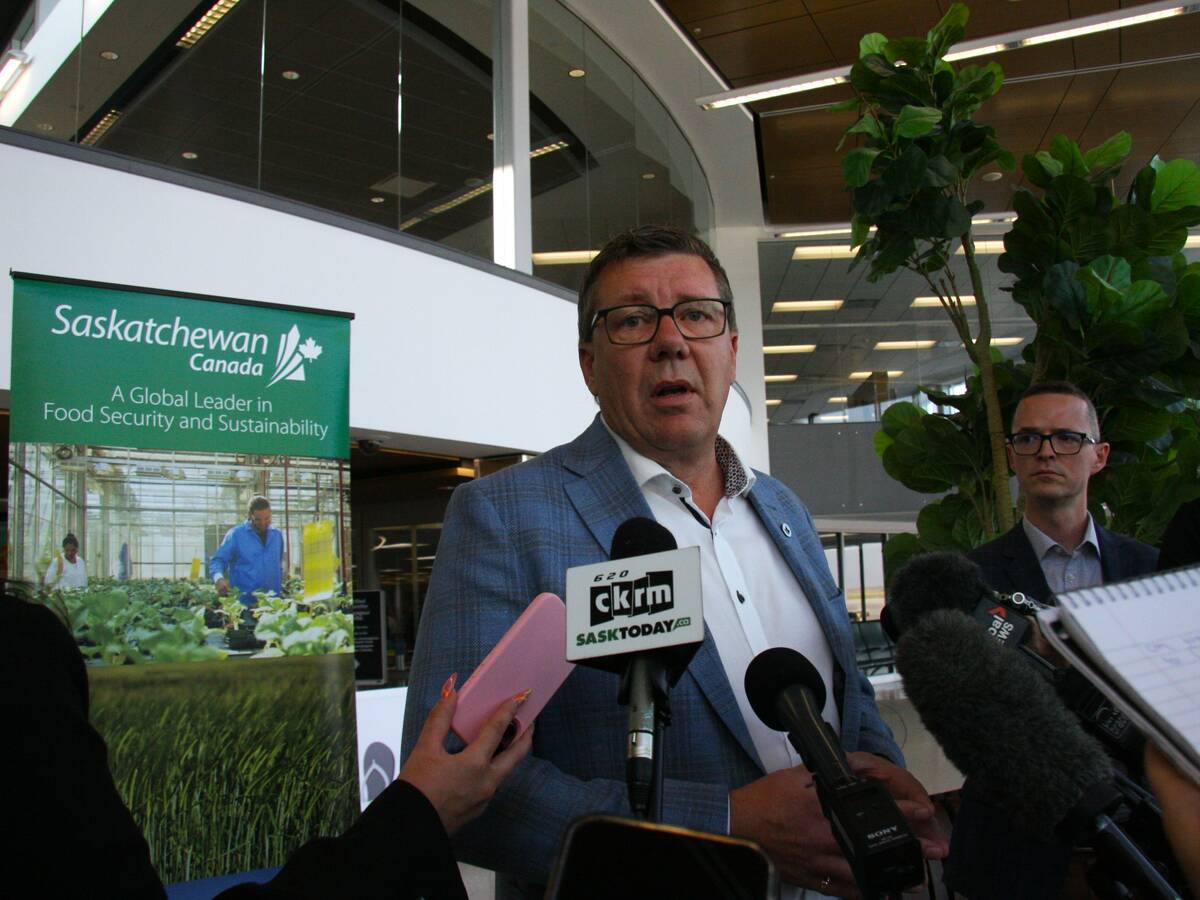OLDS, Alta. – Chicken producers have grown so used to seeing birds in
cages with half their feathers missing that they believe it’s normal,
says the North American guru on livestock behaviour.
“It’s a case of bad becoming normal,” Temple Grandin told an Alberta
Farm Animal Care conference at Olds College Nov. 29.
Chickens crowded into laying pens or birds without feathers are not
normal, and the situation has to change, Grandin told a group of
farmers, students and industry leaders.
Read Also

Moe says China trip laid ground work
Saskatchewan premier says signals of moving forward on canola tariffs can be seen in moves from Chinese and Canadian governments
“I’m very upset with what I saw in the hen house,” said Grandin, who
has toured thousands of ranches, slaughter plants, feedlots and farms
over her 30-year career. The animal welfare specialist helps design
better ways to house, move and slaughter animals.
“We’ve got to get things to a minimum decent standard. This has got to
change. This is absolutely totally awful.”
Grandin got her first taste of chicken farms when she began working
with McDonald’s restaurants in 1999 to help assure the restaurant
company that meat and eggs it uses are humanely raised.
What the researcher saw in some chicken barns was worse than any large
animal slaughterhouse she toured.
“If cattle and pigs looked like these hens, I don’t think any rancher
would say that’s OK,” said Grandin who insisted changes be made to the
way chickens, especially laying hens, are raised in the United States.
One of first things she did was tour a chicken hatchery. She asked a
worker what he did with the boxes of cull baby chicks. She was told the
worker who looked after them was on vacation.
“Ya sure’, I said. ‘I know what you’re doing with them and it’s going
to stop,’ ” she said.
“They were throwing live animals in the dumpster to get rid of them. I
was going ‘What? They were doing what?’ Nobody would throw a live calf
in a dumpster. These people forgot this is a live animal.”
Another machine that separated the live chicks from the egg shells was
broken and live chicks were going into the egg shell garbage.
“I’ve been involved with mechanical engineering things for years and it
was obvious there was a broken part on this machine that was causing
it. We got that fixed right away,” she said.
“We’ve got to get at least a minumum decent standard. Those birds I
showed on that slide, they’re disgusting,” said Grandin referring to a
picture of chickens in laying cages with most of their feathers missing.
“When you’re stocking an animal so tight they can’t lay down at the
same time, that’s just gone too far.”
When Grandin first started her work with laying hens, most birds were
given 48 sq. inches of room in each cage.
Now anyone wanting to supply eggs to McDonald’s must provide 72 sq. in.
for each laying hen. Grandin said that’s acceptable. Burger King has a
75 sq. in. requirement for its birds.
In Alberta, most laying hens must have 64 sq. in. The new code of
practice recommends layers be provided with 67 sq. in., but there is no
set time within which layer operators must reach the standard.
Grandin doesn’t know how long it will take for all chicken producers to
use the new cage size standards.
The change will start with the dedicated facilities that supply the
large restaurants, gradually expand to supermarket suppliers and
continue until the entire industry has shifted to the new standard, she
said.
Grandin said it isn’t reasonable to expect all eggs to be laid in free
run or free range barns with no cages. A more sensible solution will be
to look at stocking rates and enriched cages that have perches and dust
baths.
“I want to direct things into something sensible and reasonable for
everybody.”














